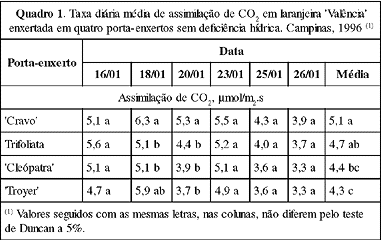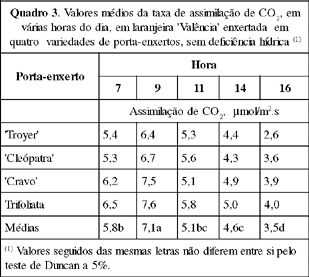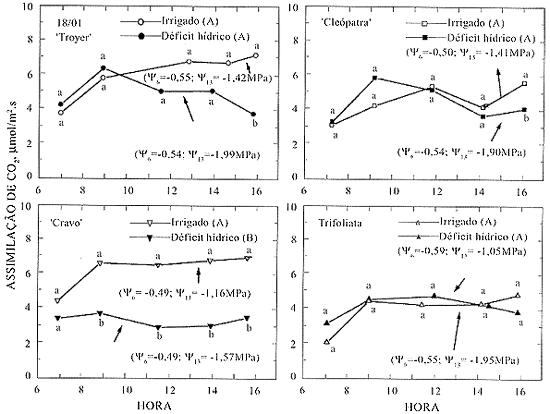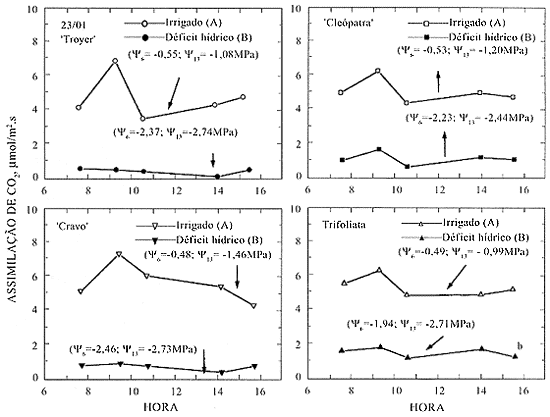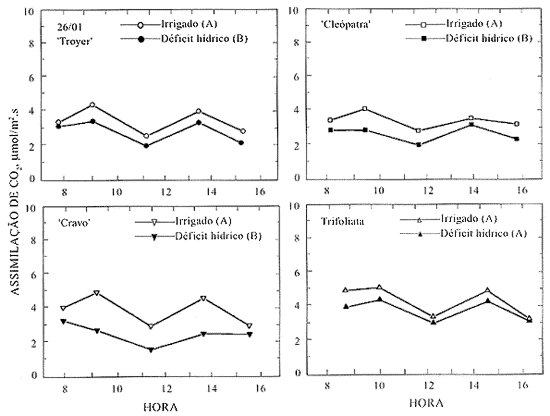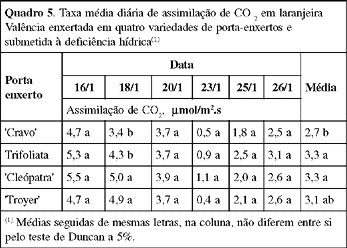The CO2 assimilation rate and leaf water potential were analyzed in 18-months-old `Valencia' orange tree, in pots. The plants were grafted on four different rootstocks: `Rangpur' lime, Trifoliata, `Troyer' citrange and `Cleopatra' mandarin. Plants were submitted to water stress until the CO2 assimilation rate was negligible when they were rehydrated. It was also analysed the hydraulic conductivity of the rootstocks used. Under well watered conditions, CO2 assimilation rate was lower in plants grafted on `Troyer' and `Cleopatra' when compared with plants grafted on `Cravo' which was not different from plants grafted on Trifoliata. Throughout the day the greatest CO2 assimilation rates were observed by 9:00h, with 8mmol/m2.s, followed by a decrease due possibly to the increase in the vapour water deficit and room temperature, from 11:00h through 14:00h. After withholding water, in the decreasing at the leaf water potential was similar to all the plants, regardless of the rootstocks used. Nevertheless, CO2 assimilation rate decreased more rapidly, after withholding water, and it was recovered more slowly after rehydration, in plants grafted on `Cravo'. These plants also presented, during the entire water deficit period, lower CO2 assimilation rate than plants grafted on Trifoliata and `Cleopatra', and similar to `Troyer'. Plants grafted on Trifoliata recovered CO2 assimilation rate in 3 days while those grafted on other rootstocks did not recover entirely in that period. The hydraulic conductivity was higher in `Cravo' lemon tree and there were no differences among the values found in the other rootstocks.
Citrus sinensis; root hydraulic conductivity; water potential; net CO2 assimilation rate

